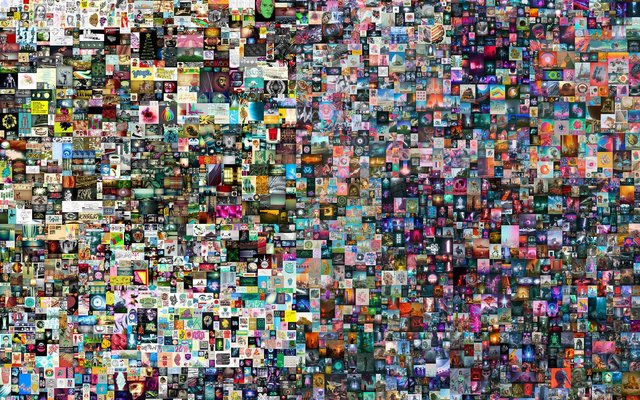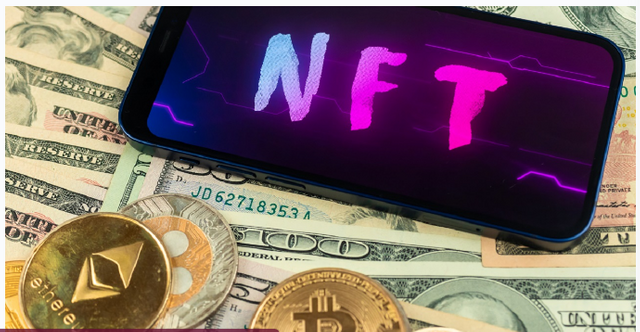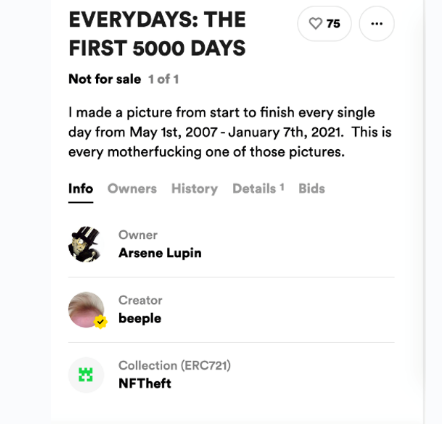While NFTs are at the heart of speculation and colossal sums are at stake, it is better to keep in mind that NTFs carry many risks (legal, tax, technological, etc.). Sleepminting is one of them, it is a risk related to the immaturity of blockchain technology and it consists of copying a digital work, while pretending to be the original creator of the work.
In this article, you will discover and understand what NFT Minting is and how it works.
1#How is an NFT created?

Minting (from English: to mint) is the process of creating an NFT and literally means "to mint/forge", relating to the minting of currency using a press. In the context of an NFT, it is therefore the action of defining the various parameters and attributes that will make it up: the address of the creator's portfolio (the issuer of the NFT), the metadata (link to the work, descriptions, etc.), the amount of the resale rights and in general all the properties related to the NFT. All this data will then be entered into the blockchain through the use of a smart-contract (the equivalent of a legal contract with automatic execution of clauses by the blockchain).
In a very simple and concrete way, an artist wishing to create a work in NFT will have to connect his electronic portfolio to a platform specialized in the creation of NFT (OpenSea, SuperRare, Rarible, etc.). He can then create and link his digital work to his electronic wallet for the cost of creating the smart-contract. One of the attributes of the newly created NFT will be the creator's e-wallet address. This will remain unchanged, regardless of the future purchaser/owner of the work. This would correspond to an artist's signature on a canvas or physical work.
Note that only the information of an NFT is stored in the blockchain, not the work in question (apart from a few exceptions such as BlockShips.io). For example, an NFT of a digital image does not contain the image in question but a link to the image, itself generally stored on a server outside the blockchain... (what could happen if the server was attacked, destroyed or simply interrupted!). It is thanks to the fundamental properties of the blockchain that all information related to the NFT will be recorded, timestamped, accessible in real time, transparent and immutable.
Immutability is a fundamental principle of the blockchain to recognize, among other things, the ownership and origin of a digital asset. And that's the rub.
2#Sleepminting: a new NFT scam
On April 1, an expert in hacking (computer hacking) and blockchain, under the pseudonym Mr. Nobody, wanted to show the community how much the technology behind NFTs is still too fragile. Its purpose was to demonstrate how current valuations make very little sense compared to what blockchain technology is capable of supporting.
To prove his point, he tackled one of the most famous NFT works. The work in question was sold for more than 69 million dollars and moreover by a standardized process by the famous firm Christie's: Everydays, the First 5000 Days by the artist Beeple .
Without going into too many technical details, let's say that Mr. Nobody managed to create an NFT using the address of Beeple's electronic wallet. He was therefore able to create an NFT with Beeple as the creator, even if Beeple was not the source of the creation of the NFT in question. He then linked the smart-contract of his NFT to a copy of the original work The First 5000 Days , creating a conforming replica of Beeple's NFT.
But he didn't stop there. Mr. Nobody then sent the copied NFT back to his own electronic wallet before sending it to a second accomplice calling himself by the name of Maurice Leblanc's famous thief: Arsène Lupin . The copied NFT was then deposited on a specialized exchange platform. What was the amazement of the community to see Beeple's work on sale a second time.
3#Should you invest in NFTs?
Sleepminting is therefore using the wallet of a third party to create a digital asset. Beeple quickly spoke out by explaining that he was sleeping (hence the expression Sleep-minting: “forging while sleeping”) during the creation of the replica of his work and that he was not at the origin of it.
Fortunately Mr. Nobody and Arsène Lupine stopped the joke and explained the reasons for their business. For them, NFT technology does not deserve such valuations given the issues of uniqueness and security.
On the other hand, it is already possible to find tutorials on the internet explaining the process and operating mode of sleepminting. In the near future, it would not be surprising to see the number of scams continue to increase, without counting on opinion leaders/influencers promoting very often flawed projects.
It is therefore a new risk, among many others, linked to this new technology which was born a few months ago. However, authenticity being one of the major principles of the blockchain, it is clear that despite this, the majority of NFTs on the market do not meet the conditions necessary for a substantial investment and meet appropriate legal and technological criteria.
So be careful if you want to start exploring or buying NFTs!

